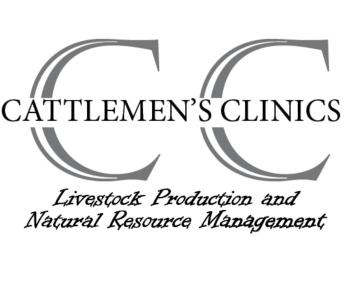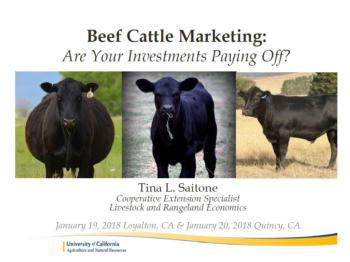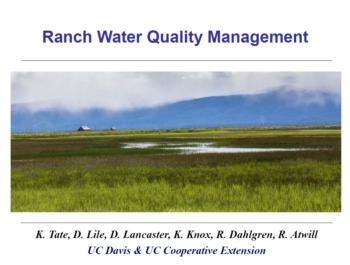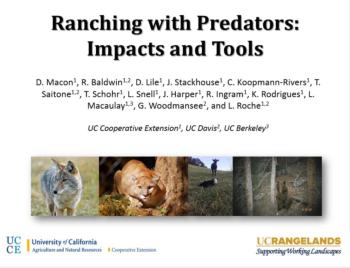2018 Cattlemen's Clinics

Clinic Highlights
1. Several quality attributes and management programs afford sellers premiums (Saitone)
2. Research consistently finds nutrient concentrations in pasture and rangeland runoff to be well below levels of concern (Tate)
3. Most irrigated pastures and meadow systems are sinks for Nitrogen and Phosphorus, as well as sediment (Tate)
4. Spatial discounts closely approximate shipping costs; consistent with FOB pricing (Saitone)
5. Predators can have direct and indirect impacts on livestock producers (Macon/Roche)
6. UCCE and UC Davis have a research project underway with California ranchers analyzing predator impacts. (Macon/Roche/Schohr)
7. Information on predator concerns and control options available for local ranchers. (Schohr) 18-01 Fact Sheet - Ranching with Predators
8. Vaccinating your cattle is like insurance on your ranch (Strickler)
9. Vaccines must be stored, handled and administered properly to be effective (McNabb)
10. There is no “standard” vaccination program that can be recommended for all animals; each situation must be evaluated individually (McNabb)
The 1st Cattlemen's Clinics were held on January 19, 2018 in Loyalton and January 20, 2018 in Quincy. The events drew over 90 participants.
2018 Cattlemen's Clinic Program
Feature Presentations
Beef Cattle Marketing: Are Your Investments Paying Off?
Tina Saitone, Ph.D., UCCE Specialist and UC Davis Lecturer
Best Management Practices at the Ranch to Promote Water Quality
Ken Tate, Ph.D., University of California, Davis
Ranching with Predators: Tools and Impacts
Leslie Roche, Ph.D., University of California, Davis
Dan Macon, Placer-Nevada-Yuba-Sutter Counties Livestock and Natural Resources Advisor, UCCE



